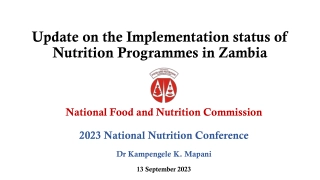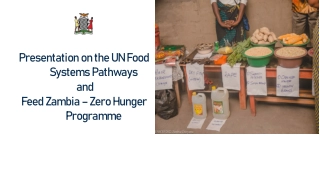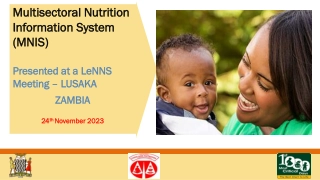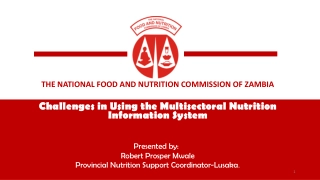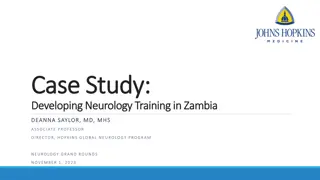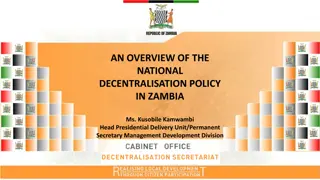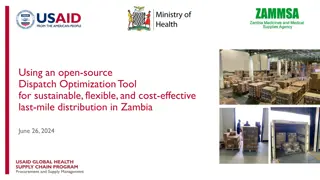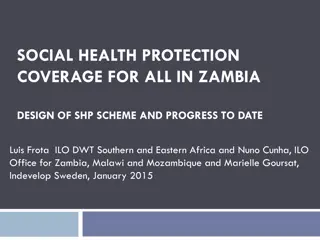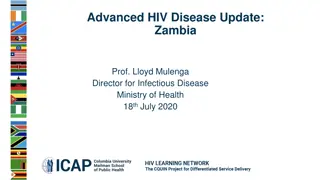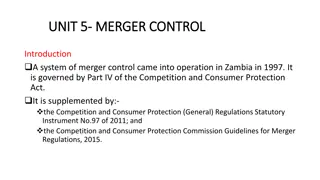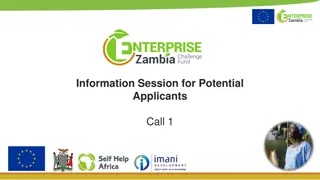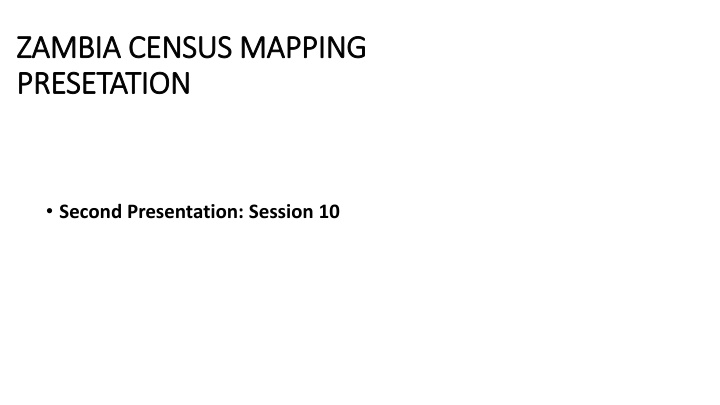
GIS Technology for Efficient Census Mapping in Zambia
Discover how GIS technology revolutionizes census mapping in Zambia, optimizing enumerator allocation, resource estimation, and data collection processes. Explore the advantages of GIS technology for accurate and efficient census operations.
Download Presentation

Please find below an Image/Link to download the presentation.
The content on the website is provided AS IS for your information and personal use only. It may not be sold, licensed, or shared on other websites without obtaining consent from the author. If you encounter any issues during the download, it is possible that the publisher has removed the file from their server.
You are allowed to download the files provided on this website for personal or commercial use, subject to the condition that they are used lawfully. All files are the property of their respective owners.
The content on the website is provided AS IS for your information and personal use only. It may not be sold, licensed, or shared on other websites without obtaining consent from the author.
E N D
Presentation Transcript
ZAMBIA ZAMBIA CENSUS MAPPING CENSUS MAPPING PRESETATION PRESETATION Second Presentation: Session 10
Presentation Outline Planning for Census Mapping Roles of Maps during Census Advantages of GIS technology for GIS
Planning for Census Using GIS Planning for Census Using GIS The mapping exercise will provide the total number of EAs which will guide the census team on how many enumerators to be employed Provide the basis to estimate resources required at each administrative level e.g. personnel, materials and transport. Mapping will provide the estimated number of households and population in each EA Ensure that EA maps easily guide the enumerators on the households that they should cover during the census period Mapping exercise will collect point of interest what will help guild enumerators in the field The mapping exercise will identify areas which would be difficult to access during census and those that need alternative transport including special areas that need security escort e.g game management areas
Role of Maps on Census Role of Maps on Census The technologies used ensured timely completion work Consistent checks and quality control Maps provide boundaries to for each enumeration area to avoid over count and under count Maps ensure equal distribution of work among enumerators in the rural and urban areas
Role Role Planning of Census using GIS Planning of Census using GIS Maps on Census Maps on Census Maps show the important land marks on the ground the guide the user. Maps help us calculate the distances on the ground using the scale their bare Maps are created with unique codes which are specific for each EA. Maps are a guide to the enumeration areas Maps help identify areas that need to be administered different questionnaires such as collective quarters
Coding structure Coding structure Administrative Unit No of Digits Province/District 4 Constituency 3 Wards 2 Region 1 Census Supervisory Area 2 Enumeration Area 1 Total 13 2 0 2 1 0 5 0 4 0 7 7 1 4 Province and District EA Ward CSA Constituency Region
Advantages of Using GIS for Mapping Advantages of Using GIS for Mapping of using GIS for Census Census of using GIS for Cost-effective solution Speed up field enumeration process; Better control and management of the project; Provide data validation and coding processes in the field; Improves completeness by filling the entire compulsory variables to be collected; Immediate quality control at the moment of data collection;
Advantages of Using GIS for Mapping Advantages of Using GIS for Mapping of Census Census of using GIS for using GIS for Control of data filling by introducing controls to reduce errors. Such controls will include skips patterns, inconsistency checks, and message prompts; Limit data loss risks since data is loaded onto the system on a regular basis; Real time tracking of field data collection by directly transmitting collected data to central system. This allows monitoring and evaluation of field mapping implementation progress and outputs achieved; Can be used as a tool for the planning and management of subsequent phases of the census; and It can also be used as a dissemination tool for census data.
Challenges of GIS during enumeration Under count and over stepping boundaries

